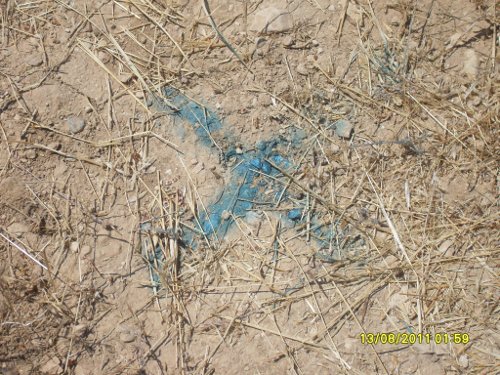Al-Walajah village is located to the southwest of the city of Jerusalem, with a population of about 2,500. In 1948, the al-Walajah people were displaced. Today, the village is threatened with total destruction as Israel continues to construct the Apartheid Wall directly through al-Walajah. On August 13, 2011, nearby villagers along with volunteers gathered at the old al-Walajah village to rebuild the abandoned houses after the 1948 Nakba and to honor the old land, on which ancient olive trees still grow.
 |
|
Above: Many houses in the village were given demolition orders by Israeli occupation forces. |
 |
|
Above: Volunteers and local villagers work together to rebuild Palestinian land before it is taken by Israel for further construction of the Apartheid Wall. |
 |
|
Above: Israeli occupation forces watch volunteers from their vehicles. |
 |
|
Above: Villagers and volunteers rebuild an old Palestinian house from 1963, which will be destroyed to build the Apartheid Wall. |
 |
|
Above: Israeli occupation forces monitor the area during the rebuilding activities. |
 |
|
Above: One of the Palestinian volunteers wears a t-shirt in commemoration of 1948's nakba (the Palestinian catastrophe). |
 |
|
Above: Occupation forces surrounded volunteers to monitor their activity. |
 |
|
Above: Villagers and volunteers rebuild Palestinian history and Palestinian rights. |
 |
|
Above: The oldest olive tree in the world is located in this village, al-Walajah, in Bethlehem. Israel intends to misappropriate the landmark for Jewish heritage. |
 |
|
Above: More olive trees, many of them also hundreds of years old, are a symbol for peace and Palestinian identity. |
 |
|
Above: A natural spring that the villagers used to use to irrigate their crops was allowed to dry up by the occupation forces. |
 |
|
Above: An old, Palestinian house, which will be destroyed for the construction of the Wall, located on a mountain in the old al-Walajah village, first occupied in 1948. |
 |
|
Above: The Israeli occupation forces mark where they intend to construct the Apartheid Wall. This X marks a path that includes old houses. |














